My mom brought a milkweed plant home this summer. It’s a cute but plain plant with beautiful flowers. It is the nesting and feeding plant that begins the life of a Caterpillar- Monarchs.
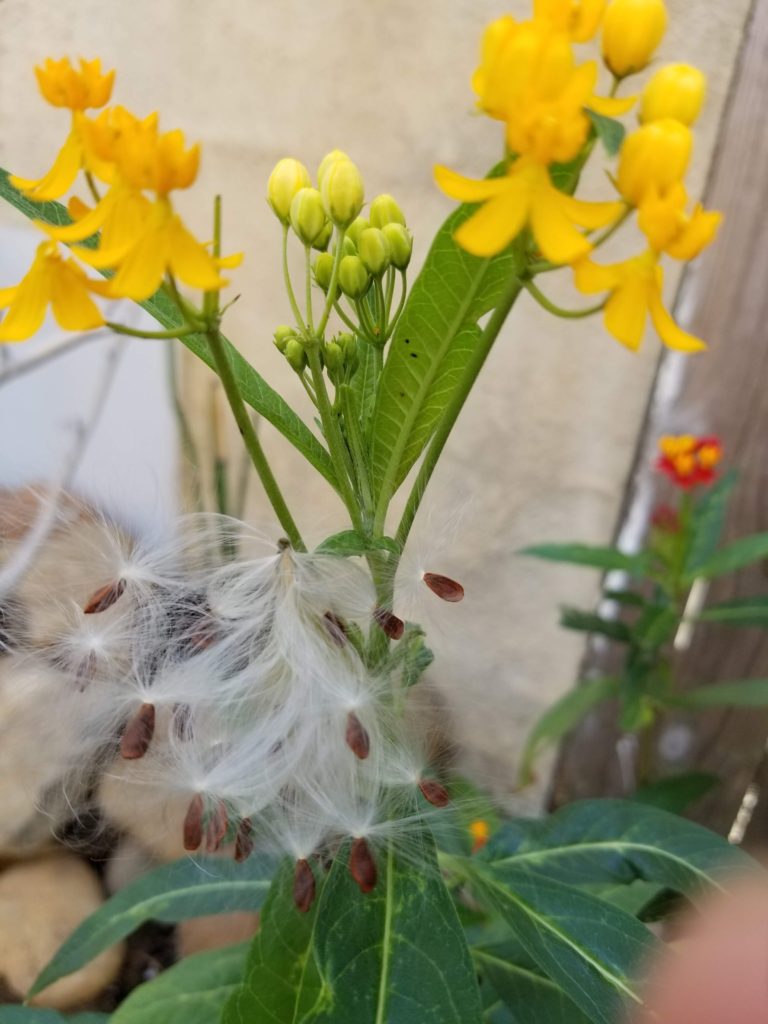
After a few weeks, we found three caterpillars eating the leaves. Being inexperienced at raising monarch butterflies, we observed and started reading about what to do. It turns out that a Monarch butterfly will lay about 500 eggs, one by one. If that’s true, only 1 out of 166 survived to ‘worm-hood’ on this plant.
As we watched them day by day, we noticed one was gone one day. We worried that something might have eaten it, but we learned that milkweed plants are toxic to most animals, so these little caterpillars were safe… until they left to find their location to transform. We hoped that this meant that this third caterpillar found a safe place to turn into a cocoon. We looked around, but didn’t see him. This was all a mystery to us still.
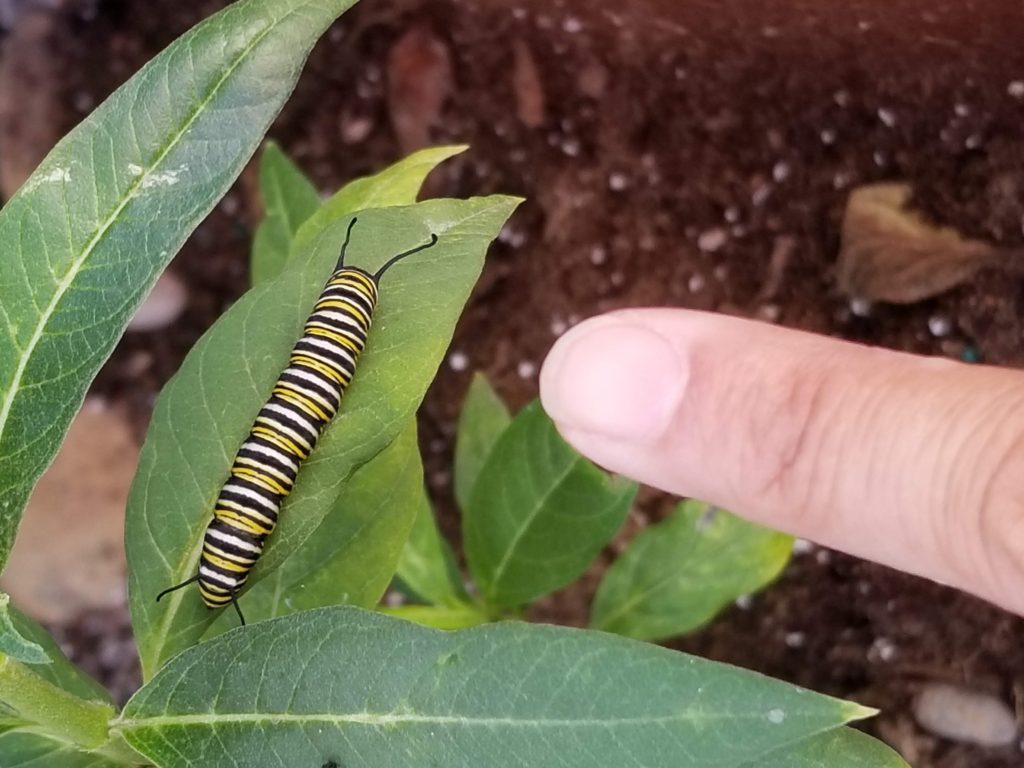
The next day, the other caterpillar crawled off the milkweed plant, and went up and up into the next plant’s lattice. It ended up at the top where it sat for a few hours then went into a J position. This is when they start to form their Chrysalis under their skin. In about 12 hours from this J position, they perform the delicate transition from Caterpillar to Chrysalis.
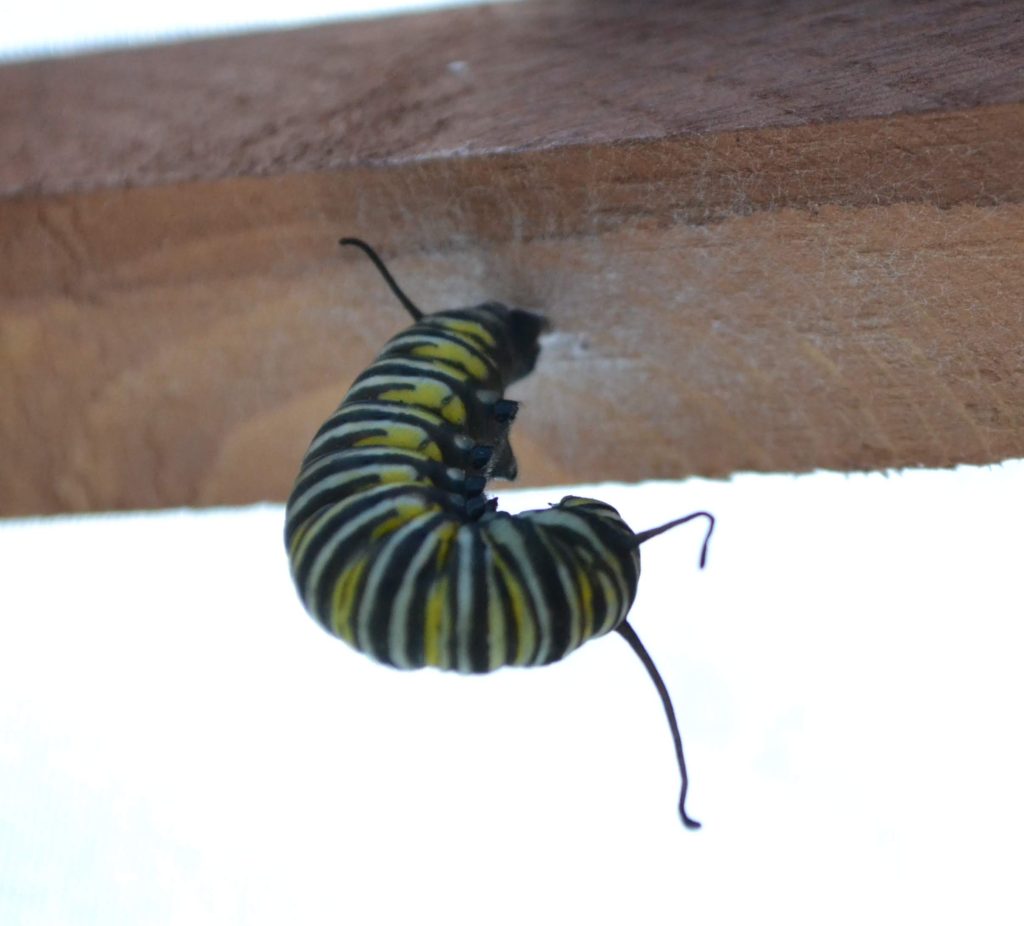
The next day, we looked and he was still there in the morning. In the afternoon, we went back, but somehow the only thing left was a piece of his outer skin hanging from the lattice. My heart dropped. I couldn’t figure out what went wrong. We decided to concentrate on the last caterpillar and move it into a more secure location where he’d safely transform without any danger.
where he’d safely transform without any danger.

After reading further about the transformation, I found that there is a moment during their shedding where they attach one ‘tentacle’ onto their hitching spot while dropping the old skin. They have one chance to get it right or risk falling off and ending their precious existence. When I read that, I ran back to where the second caterpillar had vanished and looked behind the fence. That’s where I saw his little cocoon, squished from the gravity of falling. I picked him up and took him to the safe yard to see if we could save him.
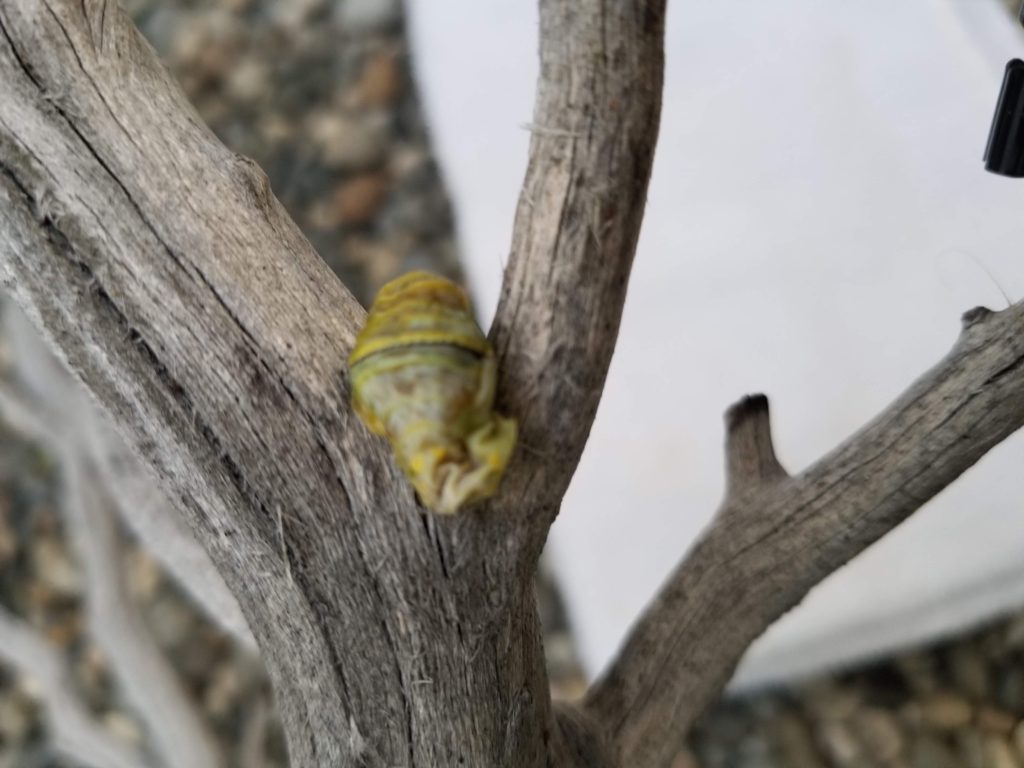
Unfortunately, he was already infested with some other larvae and didn’t make it. Fortunately, the last caterpillar was still alive, and ready to transform about a day after we moved him or her.
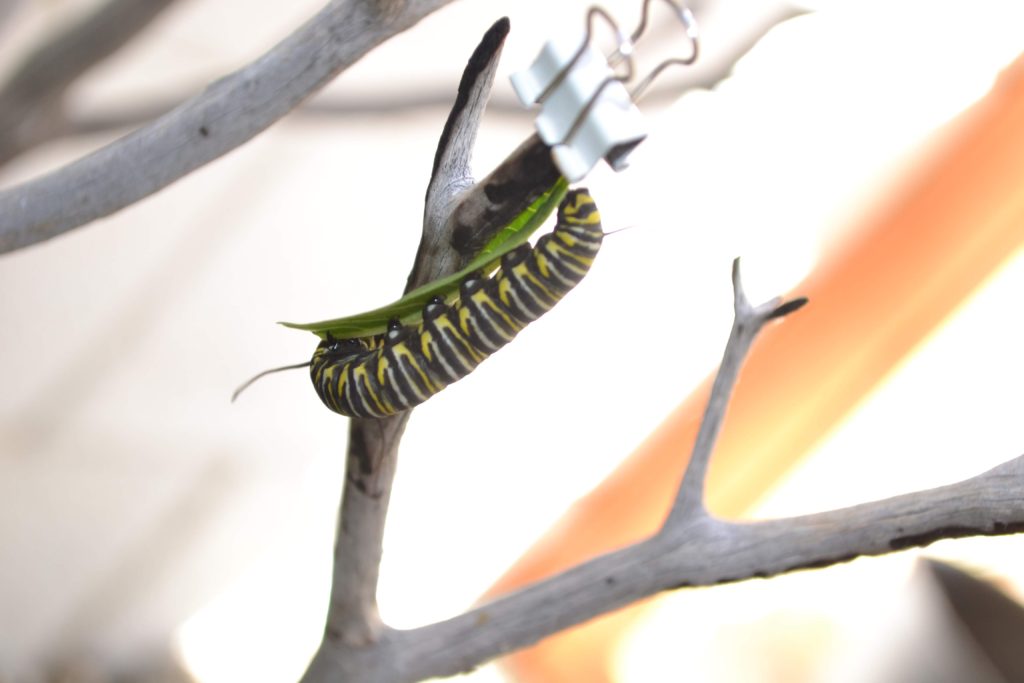
The caterpillar found a spot and started its transformation into the Chrysalis stage.
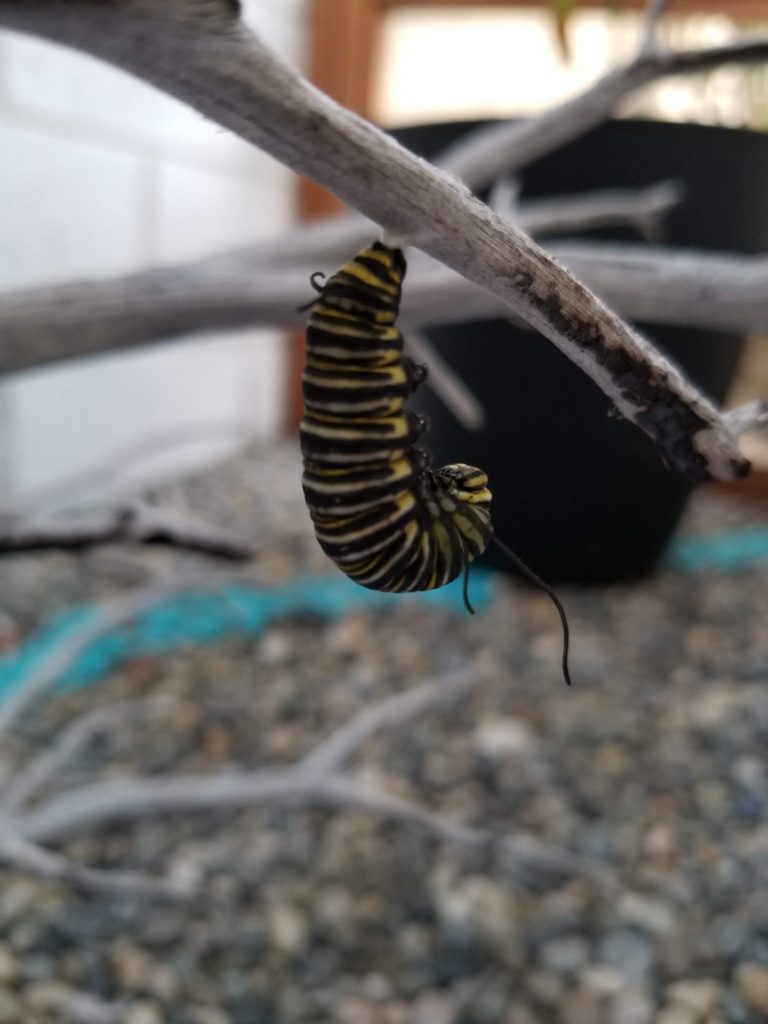
It took about 18 hours to make the transformation. At the 18th hour, it began to shed its outer skin, to reveal this little jewel:
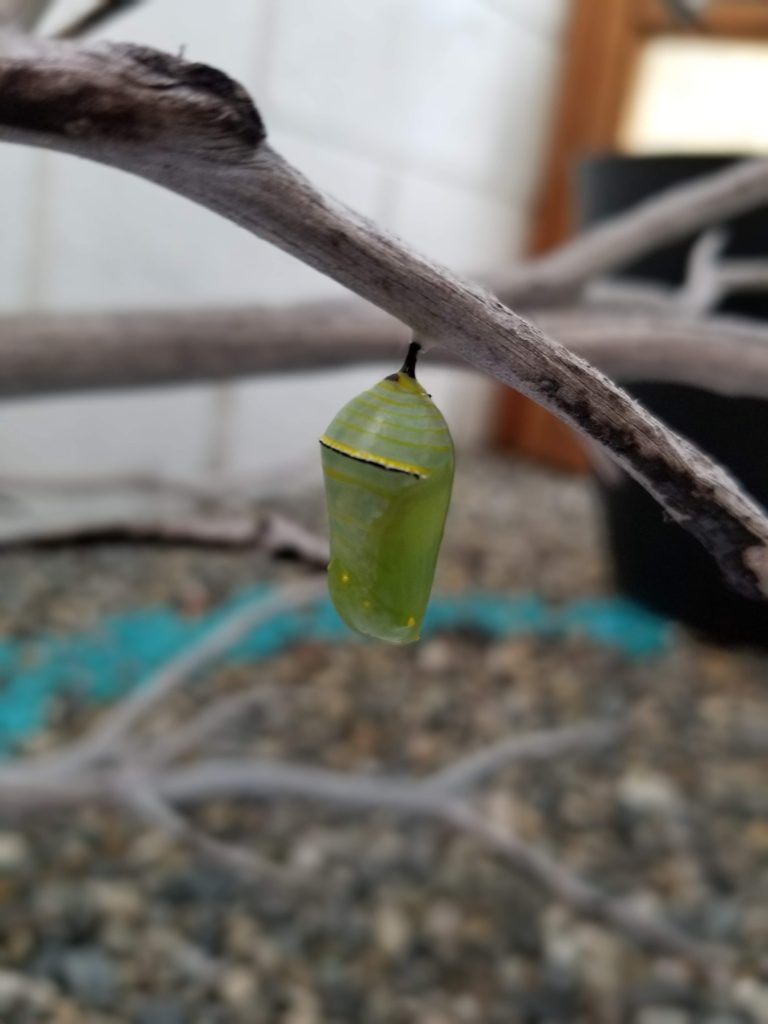
This was taken with my Samsung 8 on October 4 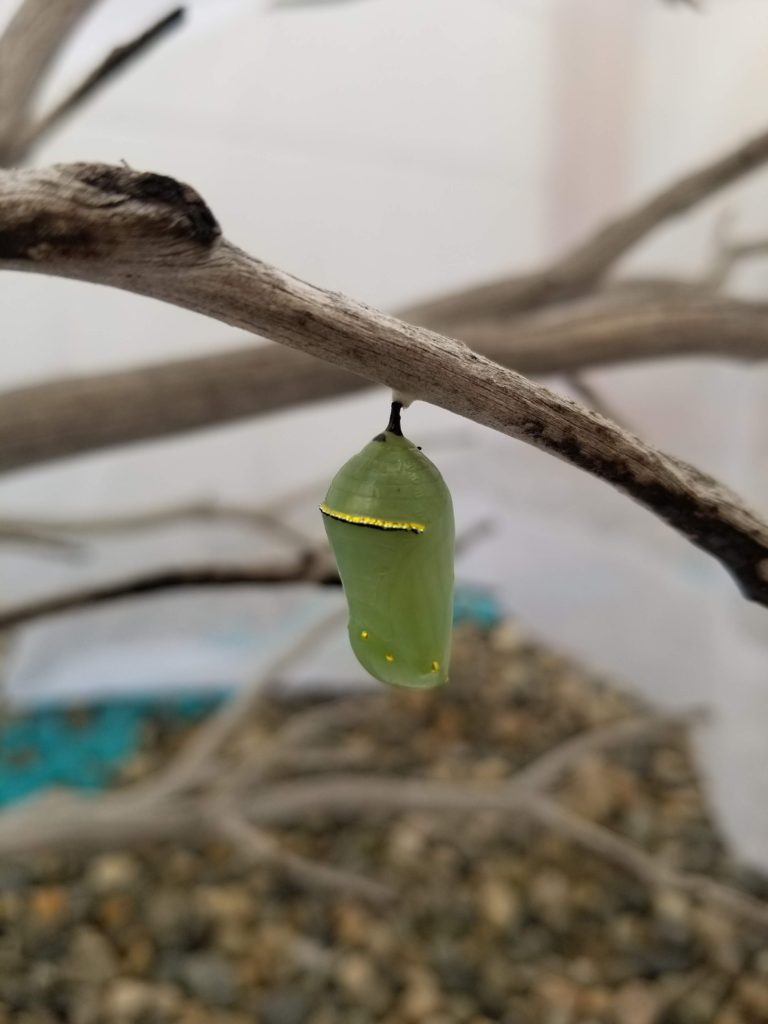
This was taken with my Samsung 8 on October 8 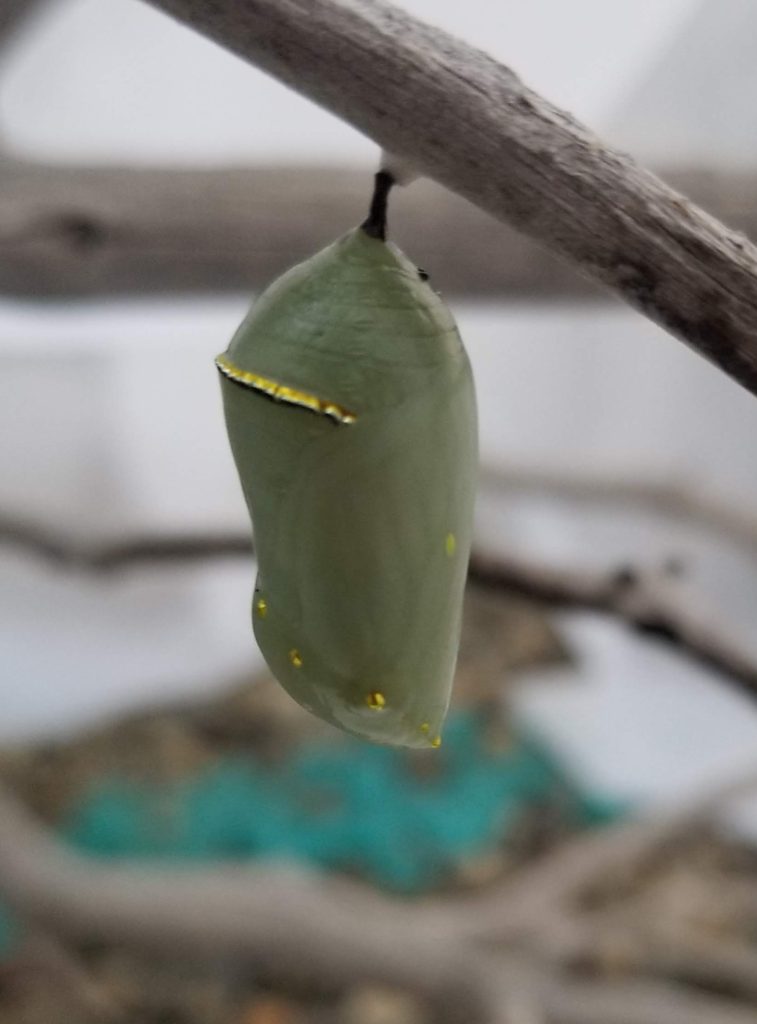
Can you see the wings? October 15
Most of the photos I took were taken with either my Samsung 8, or my Nikon 35 mm digital camera.
On the 14th day, this is how it looked:
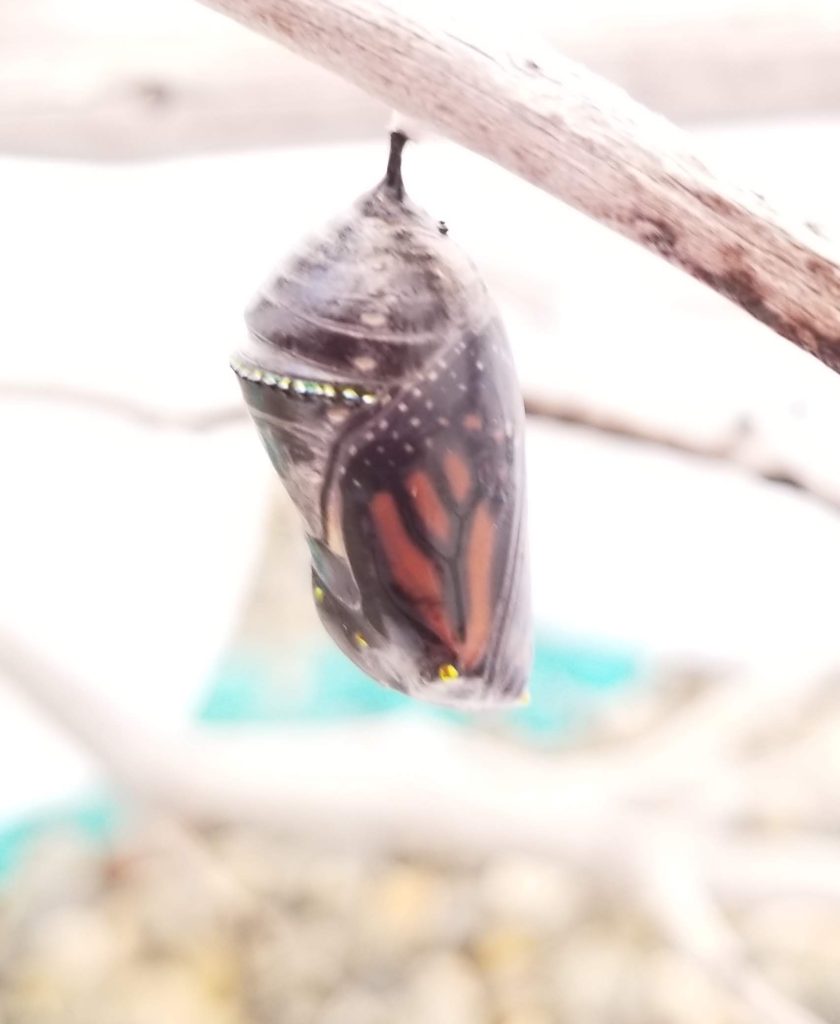
The same day that the cocoon became clear is when it shed the cocoon shell and looked like this!
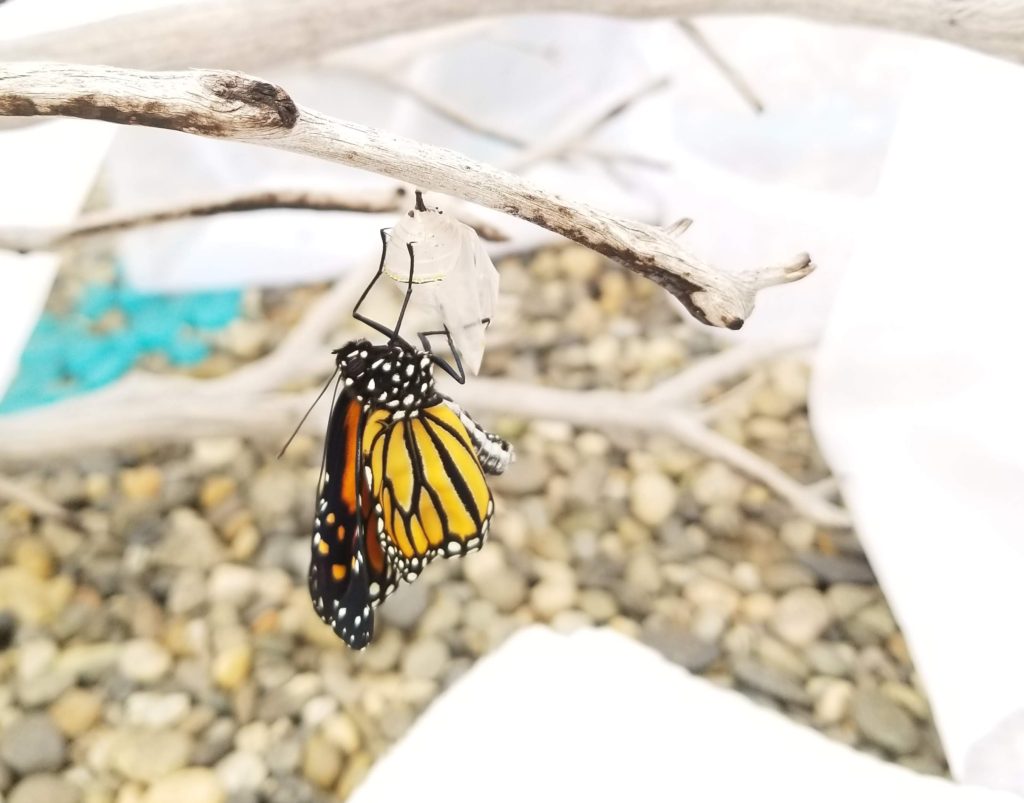
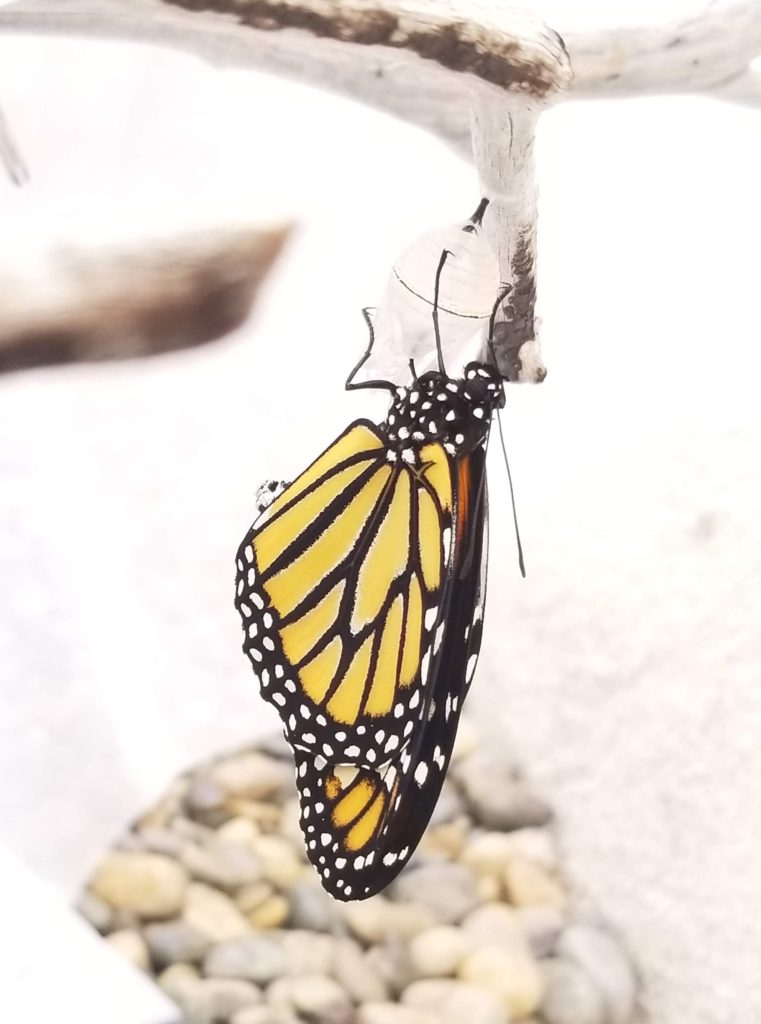
After 4 hours or so, we noticed that she (her wings didn’t suggest that it was a male) took in some nectar from the surrounding flowers we left nearby. The day was windy, so we decided to let her stay with us another night before letting her go.
Saturday morning, we took her outside, set her on a flower, and she immediately flew off to the south. If she is a migrating monarch, she will go to Mexico, as explained in National Geographic . These super butterflies live up to 8 months, where butterflies that are born earlier only live a few weeks in order to breed. Watch as we let her go!
As an Amazon Associate, I will add a few ads here that you can feel free to look through if you love butterflies. This will help support our website. Thank you!